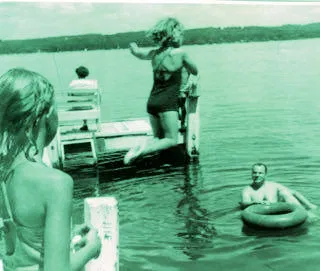TURN YOUR STORY INTO A BOOK
Thinking of writing a business book, parenting book, or memoir? Are there stories from your life that taught you important lessons you want to share with others? Maybe you are eager to write a self-help book or a book of lessons about life drawn from your own experiences, but you don’t know how to start to turn your story into a book.
I have worked with many authors on weaving their personal stories into memoirs or self-help books. A ghostwriter or developmental editor can really help you to focus in on your best stories and turn them into a legacy memoir. My clients and I typically start with a one-hour consultation call that helps them get clear on what type of book they want to write, what their process will be, and what kind of assistance I can provide. However, to get you started, or unstuck if you’re not sure how to proceed, let me share some ideas on how you can begin to turn your story into a book.
Begin with the most important stories. Choose to tell the stories you feel are the most important. If you could only tell three stories of your life, what would they be? If you tell stories to illustrate points to people you wish to persuade, teach, or entertain as part of your work (paid or volunteer), what are the top three anecdotes you like to use? Begin there. Get your top, key stories onto the page.
Tell your story in your voice. Your voice in the final draft of your book won’t be the same as the voice you use when telling your story to someone else, or to a device that records you speaking. Try telling your stories on paper and telling them again by dictating them into software that transcribes your words. (Or, you can record yourself telling your stories and use a transcription service such as Transcription Hub to turn them into words.) Even if you end up working with a ghostwriter or developmental editor, that professional will want to hear your voice in her ear when she’s writing a sentence or shaping a paragraph for you.
Put the reader in the moment. There’s an old saying in book publishing: “Show, don’t tell.” There is a big difference between telling your reader “The birth of my son was uneventful, so I was not expecting to discover that he had a condition called sensory processing disorder” and showing her that “On a lovely spring day, after a two-and-a-half-hour induced, epidural-eased labor that was so painless and spiritually uplifting that I was practically communing with my ancestors on the astral plane, I got the thumbs-up from the doctor: I’d given birth to my first child, a healthy little boy. . . “ (That’s from my award-winning, coauthored book Raising a Sensory Smart Child.) Don’t just record the dry facts. Use sensory details about sounds, sights, smells, and feelings to describe time and place. Include details such as your grandmother’s hands kneading dough or the smell of that vinyl playhouse for your dolls that filled the air as you ripped away the wrapping paper on your birthday gift that year you turned seven. Use humor as you tell about the first time you tried to seem professional to a new client and goofed up big time.
Don’t worry about the writing for now. Great storytellers don’t necessarily use fancy language—Ernest Hemingway is proof of that. Your inner critic can be quite a nuisance, so when you first record your stories, tell him to take a hike because you are busy! Editing too early in the process can cause you to lose your enthusiasm and stop writing.
Be emotionally honest about your experience. Emotional experiences connect us as fellow humans sharing the planet. If someone relates an emotional experience we have never had, we are naturally curious. We want to experience it through reading or listening to someone else’s story so that we feel a connection. Don’t tell us “My father walked out on our family when I was ten years old and I never saw him again.” Paint the emotional scene. What do you remember? How did you react? Did you bury your head in a pillow and cry, go outside and run through the woods, play a sad record and sing along? When you first began to pursue your passion as a career or a calling, were you overwhelmed to realize you had taken on a project that was far bigger than you felt you could handle? Let yourself be vulnerable on the page. It’s what makes you human and what will draw people to your story.
Remember, YOU are the storyteller. You don’t have to tell the story the way anyone else would tell it. This is your story, and your truth matters. If you remember that when you were a child, you told your mother you wanted to be a dancer when you grew up and her response was curt and dismissive, that story is true for you. Later, you can get her side of the story, or talk to others who were there, but start with the story that is true to what you remember.
Focus on the emotions not the lessons. Lessons are important, but being emotionally honest on the page even more so. Many people wish to write a memoir about their lives or a section or aspect of their life so that they can share with others not only their story but the lessons they learned along the way. Because it feels safer emotionally to write about ideas and what you learned than to be vulnerable in telling the story, you can end up telling the reader what happened instead of showing them. The emotional distance between you and your story that you merely “tell” becomes emotional distance between your reader and you. Bring people into your experiences, express emotion when storytelling, and readers will care much more deeply about the lessons and insights you wish to share. You need to be present in any book of advice to others, and readers need to see you as strong and wise but vulnerable too so you’re relatable.
Let a photograph inspire you. If you’re stuck on how to write a story, pull out a photograph—perhaps from a time in your life when you had yet to learn an important lesson, or from a time when you were new to your work or an experience you want to write about (parenting, teaching, cooking, whatever it is.) Let the photo bring you back to that time and place. Share the story of the day that photo was taken and the moment the camera captured. Pay attention to what you were wearing, your body language, your facial expression, what’s in the background, anyone or anything else in the photo with you—and what was missing. Remember who you were at that instant in time. What did you know? What had you yet to learn?

Write at least one story of when you turned a page, so to speak, having found courage and inspiration. If you want your story of suffering or struggle to inspire others, you must allow them to experience that powerful moment when it all changed and you found your voice, you walked out of a bad situation or you walked into the unknown open to the possibilities yet to be seen. You must let us feel that triumph so we are pulled into wanting to read more about what you’ve experienced and what you know.
Writing some of your stories can help you conceptualize the book you want to write and get a feel for whether you will be comfortable opening up emotionally and letting yourself be vulnerable to your readers. Get started with the writing. Get the stories down on the page.
When you have written several stories from your life, you can step back and observe how you feel about being truthful on the page and sharing moments that don’t necessarily put you in the best light, or sharing personal moments that make you feel exposed. Are you writing self-help or a book of life lessons? Then you can start to observe the threads that connect the stories, and you can begin to record the ideas they convey. My story of my son’s birth was meant to help readers understand my joy, hope, and excitement that would soon give way to confusion as I noticed he was not developing like the books and my friends and family said babies do. That story opened the introduction to my coauthored book Raising a Sensory Smart Child. Every story has to have a point, whether you are writing a memoir or a book of life lessons, so sit with your stories and ponder what someone else might learn from them or experience as a result of reading them. Maybe they will inspire your reader, or teach them, persuade them, or entertain them—or a combination of all of these.
Editing and shaping the stories you tell and how you tell them is important and will come next, but don’t get ahead of yourself if you are just beginning. Focus on getting those stories recorded and again, let that inner critic go on a long walk while you’re busy writing.
Have a few stories down? Ready to write your memoir or self-help or life-lessons book based on your experiences? Contact me to see how I can help you as a developmental editor, ghostwriter, coach, and consultant to get your book finished and ready to be produced and sold!

Nancy Peske is a ghostwriter, developmental editor, and book publishing consultant who has done editorial work on books including bestsellers and award-winners for over 30 years.